Nothing beats a shiny, happy smile. And while our feline friends may prefer to keep their Cheshire Cat grins under wraps most of the time, it’s still important to protect their teeth. If nothing else, you want to prevent hefty dental bills from piling up. Maybe you’re struggling with your cat’s dental hygiene routine, though. You don’t want to give up (good for you), but your cat pins their ears back when you lift YOUR toothpaste. If you’re looking for some middle ground, we have the perfect solution: cat dental treats!
Cat Teeth
Once they reach adult age, cats have a total of 30 permanent teeth. Unlike most of our teeth, cat teeth don’t have flat occlusal surfaces. Instead, they have sharp points. Why? Easy: cats are obligate carnivores. In the wild, felines don’t use their teeth for chewing. The teeth – especially the incisors and canines – capture and kill prey. Wild cats then swallow bites of food whole.
Actually, YOUR cat doesn’t really chew their food, either. If you watch (and listen), you’ll notice them tossing their head back after taking careful mouthfuls. (This is why removing all of a cat’s teeth doesn’t affect their diet one bit. Cats without teeth continue to eat dry food without a problem) However, when it comes to cat dental HEALTH, tigers and your little tabby have distinct differences.
Cat Dental Health
No one runs around brushing the teeth of the wild cats of the world. The feathers and fur of their prey items do the trick, scraping plaque and tartar away while they bite. Most cat owners don’t feel like offering this alternative to their beloved felines, though. Which means stepping into the gap with manual tooth brushing – or not. (And guess which happens more often)
By the time cats reach four years old, 50-90% have some kind of periodontal disease. Break it down, and 60% of cats develop tooth decay, while 80% develop gum disease – and both are preventable! The problem comes with our cat food choices.
Wet cat food ranks as the top recommendation because we want our felines to stay hydrated. Unhappily, wet food REALLY doesn’t require your cat to chew. Dry food encourages chewing – provided it’s the proper size. The mechanical motion of chewing scrapes down the premolars and molars, preventing plaque from gaining a foothold. But it doesn’t provide any moisture. It’s a catch-22.
"Cats have to chew, and the mere act of chewing results in increased saliva release. The saliva rinses the mouth and also promotes certain bacterial activity that is beneficial."
Enter Cat Dental Treats
Cat dental treats entered to fill the gap. The treats come in larger sizes than standard cat treats, encouraging kitties to bite down and chew, working their teeth. The crunchy texture scrapes down each tooth, removing nasty plaque before it has a chance to solidify into tartar. And with a harder surface than the average treat, your cat’s jaw muscles get a nice workout in the bargain, keeping every part of the mouth functioning at peak performance!
Now, are cat dental treats the BEST solution for the prevention of nasty periodontal disease? Of course not. Brushing your cat’s teeth remains the gold standard. But if you’re fighting with the finger brush, and you’re facing doing nothing and potentially paying monstrous dental bills, it’s a nice alternative. Especially since cat dental treats often come in multiple flavors, appealing to every feline palate.
Keep in mind one little caveat, though: cat dental treats are NOT intended for kittens! They’re much too hard for baby teeth. Wait until their adult chompers have come in.
Choosing a Cat Dental Treat
You want to do the best for your cat’s teeth. There’s NOTHING wrong with that. And there’s nothing wrong with adding cat dental treats to a tooth-brushing regime, either. You can’t do TOO much to protect your cat’s teeth and gums. However, while plenty of treats might feature a toothy cat grin on the packaging or claim they’ll help with dental visits, you need a healthy dose of skepticism when shopping. If you have your cat’s best interest at heart, keep these key features in mind:
- VOHC Seal of Approval: The Veterinary Oral Health Council (VOHC) reviews and approves dental products that remove plaque and prevent tartar. Approved cat products with their seal have passed their rigorous testing.
- Texture or Shape: You want to see a special shape or unique texture to the treat. Remember, you’re trying to scrape away unwanted plaque. Most cat dental treats come larger than average treats, but some feature different shapes to encourage chewing.
- Flavor: Every cat has different preferences in taste. You should find a flavor your cat WANTS to snack on.
- Calories: Helping your cat’s dental health is important, but not at the expense of their weight. Try to find cat dental treats with low-calorie counts.
Best Cat Dental Treats
Whether it’s your dog or your cat, reaching for a toothbrush and toothpaste tops the list in preserving tooth and gum health. However, that isn’t always possible. And throwing in the towel doesn’t do you, your cat, or your bank account any favors. Offering cat dental treats helps keep your cat’s teeth and gums healthier, and your cat thinks they’re getting rewarded with a nifty snack. Everyone wins! And if you can sneak a brushing in here and there, you have the perfect recipe for a beautiful, long-lasting smile.
Greenies caters to felines of every taste, offering cat dental treats in three different flavors: chicken, salmon, and catnip. The treats come in fish-like shapes that encourage your cat to take the time to chew, while the crunchy texture gently scrapes away unwanted plaque. And not only do you get the VOHC seal of approval, but you get recommendations from veterinarians across the country. Best of all, each treat comes in under two calories (1.39, to be precise!).
We use these for our youngest. (At three, she already needed a full dental cleaning – so right on schedule) And she DOES take the time to crunch them up. We mix the flavors, and she doesn’t seem to have a favorite out of the bunch.
Downside? Greenies DOES use grains in their ingredients, which some people object to. Also, some of the larger cats can swallow the treats without chewing. You’ll have to look at them to gauge size.
The Good
- VOHC seal of approval
- Available in 3 flavors
- Fish shape
- Crunchy texture
- Under 2 calories per treat
The Bad
- Grains in the ingredients
- Treats may be too small for large cats to chew
Meow Mix primarily caters to the fish-lovers in your feline family with their flavors: salmon, tuna, and chicken. They pack extra calcium and vitamin D into each treat to help keep your cat’s teeth strong as they devour the crunchy snack. The scalloped edges of the treats provide a unique shape for chewing, the texture going to work on your cat’s plaque. And at two calories a treat, you’re well within a healthy snacking range.
The downsides? Unfortunately, you don’t get the VOHC seal of approval with these cat dental treats. Also, the treats are on the small side, allowing most cats to swallow them without chewing.
The Good
- Available in 3 flavors
- Scalloped shape
- Crunchy texture
- 2 calories per treat
The Bad
- No VOHC seal of approval
- Treats may be too small for large cats to chew
When it comes to scraping your cat’s teeth, a unique shape isn’t the only answer. Purina uses a special porous texture with their cat dental treats. As your cat bites down, the treat scrapes over their teeth, working every bit as well as a different shape to encourage chewing while still removing nasty plaque. You can choose from chicken or salmon, as your kitty’s palate desires, and you get extra calcium and taurine to support tooth and heart health. The VOHC approves these cat dental treats, and with 1.3 calories a treat, so will you.
So what’s the downside? The treats fall on that small side (again), and the round shape makes it easier for cats to swallow.
The Good
- VOHC seal of approval
- Available in 2 flavors
- Spongy texture
- Under 2 calories per treat
The Bad
- Treats may be too small for large cats to chew
VetriScience takes a different approach to their cat dental treats. They use pumice as a natural abrasive to remove plaque, with a bonus of zeolite to freshen your cat’s breath at the same time. The scalloped edges encourage chewing, and the soft center helps massage your cat’s gums. Chlorophyll, zinc, and coenzyme-Q10 provide natural anti-inflammatory and antibacterial properties, with a boost of natural probiotics thrown into the mix.
Downsides? At seven calories a treat, this is one of the heftiest snacks for your kiddo. And while it’s chock full of natural ingredients, they aren’t any that feature high on feline lists. Most cats don’t like the taste. And the added pumice makes it difficult for many cats to bite down on in the first place. You want to encourage your cat to chew, but the cat dental treat doesn’t work well if they can’t.
The Good
- Uses pumice as a natural abrasive
- Scalloped edges
- Crunchy texture
- Includes probiotics
The Bad
- No VOHC seal of approval
- 7 calories per treat
- May be too hard for cats to chew
Wellness combines proteins and fruit into SIX different flavor options! One’s sure to appeal to your picky feline. Each of their cat dental treats features a different shape, encouraging a time out for healthy crunching. All of the ingredients come from all-natural sources, blended into a crunchy treat that improves feline dental health. And each treat comes in at just 1.1 calories!
The downsides? You don’t get the VOHC seal of approval, unhappily. And while the FDA’s still puzzling over the link between grain-free ingredients and cats, the inclusion of peas in this list means you need to take it easy with administration – even with the low calorie count. And while YOU like the sound of adding fruits into your cat’s diet, they’re an obligate carnivore; cats aren’t always fans. Finally, they DO add green tea extract, which can increase urinary issues. Watch your male cat carefully.
The Good
- Available in 6 flavors
- Multiple shapes
- Crunchy texture
- Under 2 calories per treat
The Bad
- No VOHC seal of approval
- Grain-free ingredients
- Contains green tea extract
- Cats may not like the flavor
You really want that VOHC seal of approval, right? Well, Whiskas rounds out the list of cat dental treats with that distinguished honor. The treats come in various shapes, all designed with scraping plaque in mind, available in chicken or salmon. The crunchy texture goes to work right away, prompting your cat to take their time and chew away.
So what are the downsides? Unfortunately, Whiskas stopped carrying these cat dental treats in the United States. You can order them from across the pond, but you’ll end up paying more. And while the calorie count sits at 3.4 per treat, it’s not horrible – provided you watch the number you pass out.
The Good
- VOHC seal of approval
- Available in 2 flavors
- Multiple shapes
- Crunchy texture
The Bad
- 3.4 calories per treat
- Only available from the UK
Clean Teeth, Clean Smile
Cats don’t always cooperate when it comes time to brush their teeth. But sacrificing their dental health isn’t an option. (Just because a cat CAN eat without teeth doesn’t mean they won’t suffer from mouth pain getting to that point!) Good thing cat dental treats exist, so you have a third option. And it’s an alternative most cats enjoy participating in!
Now, let’s get those kitty canines shining and ready for the next photo opportunity!

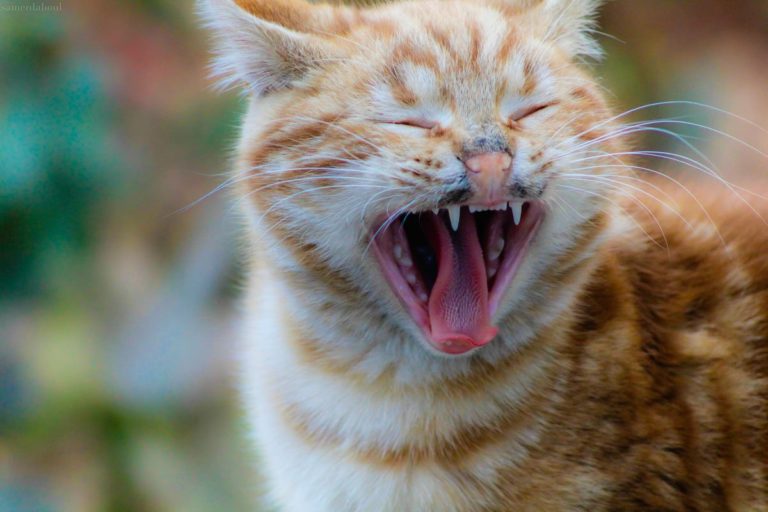
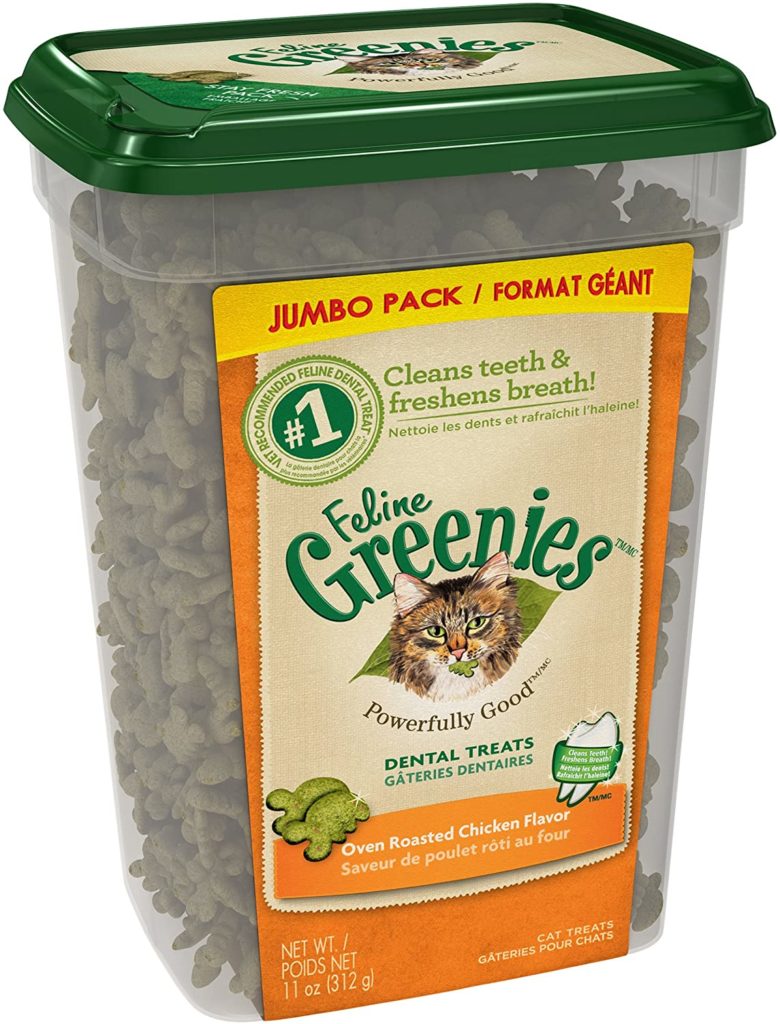
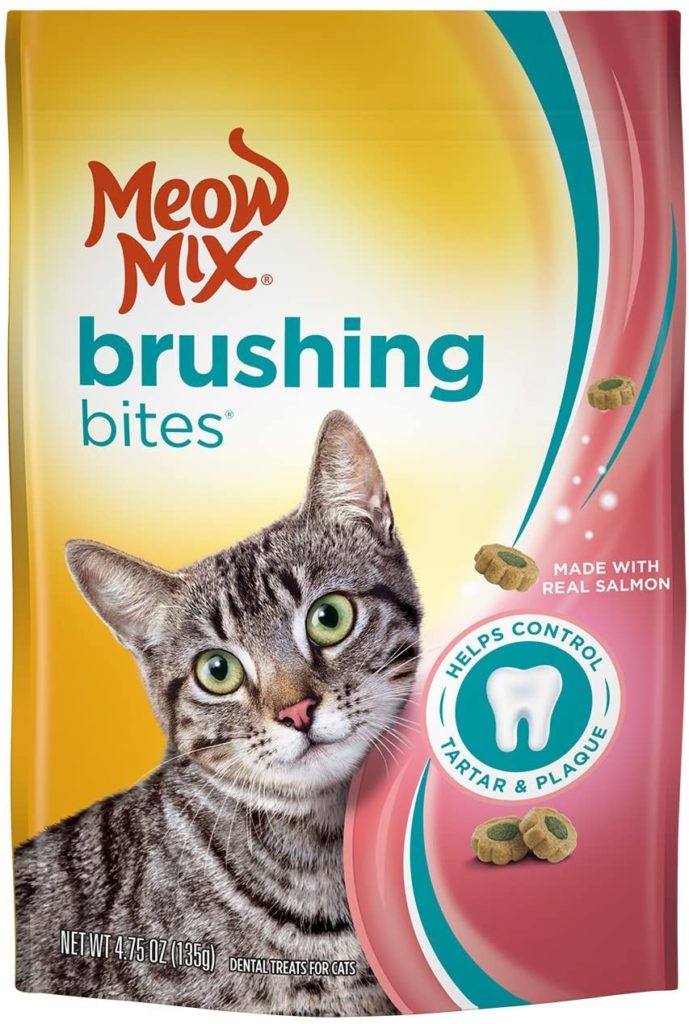
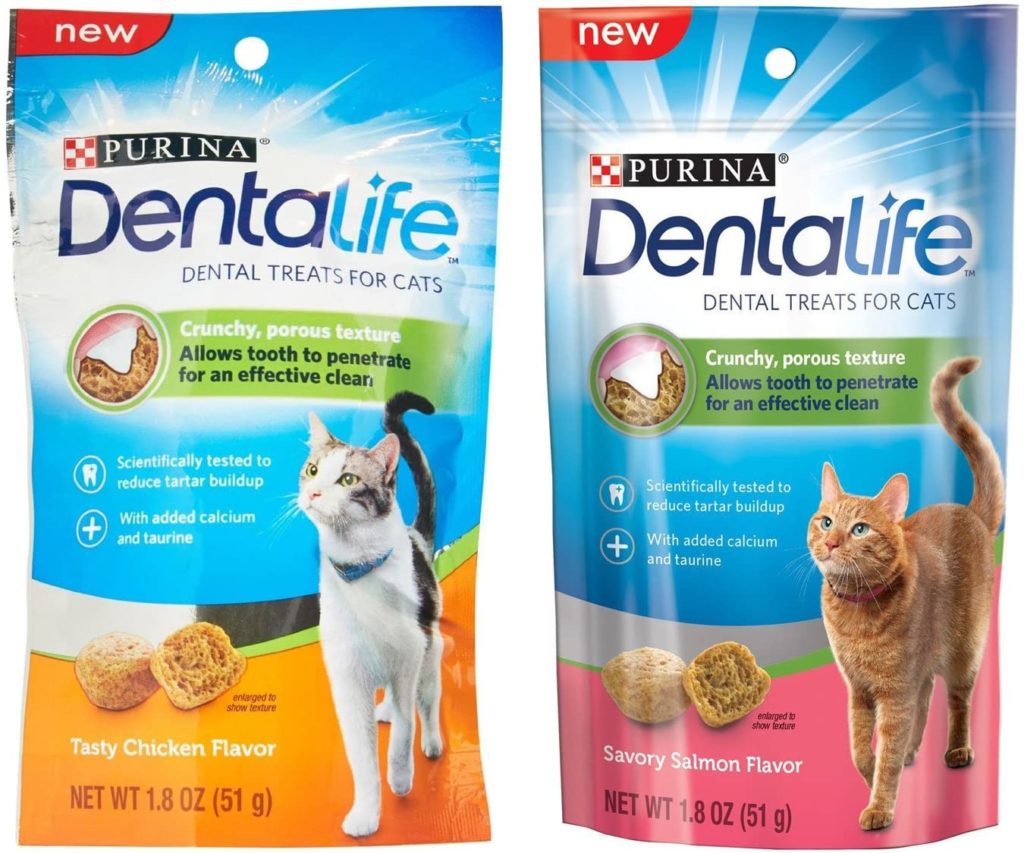
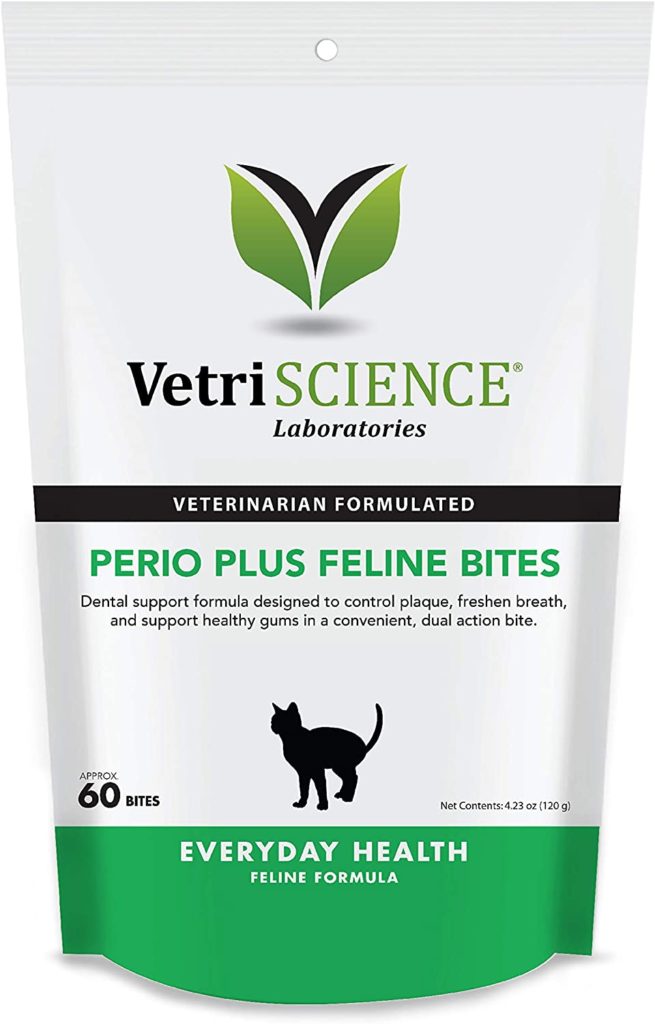
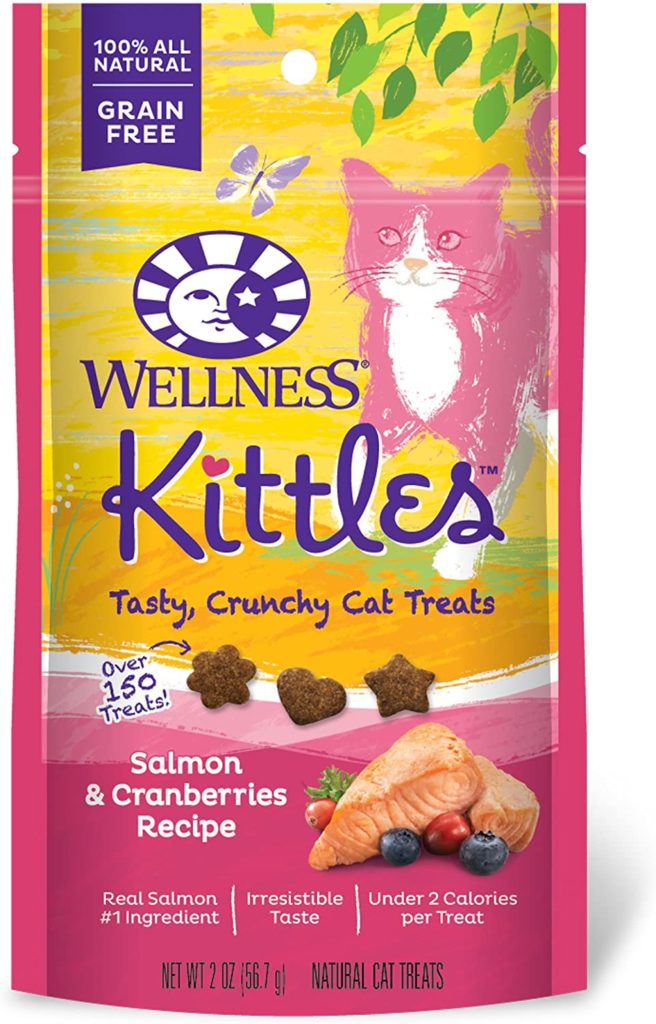
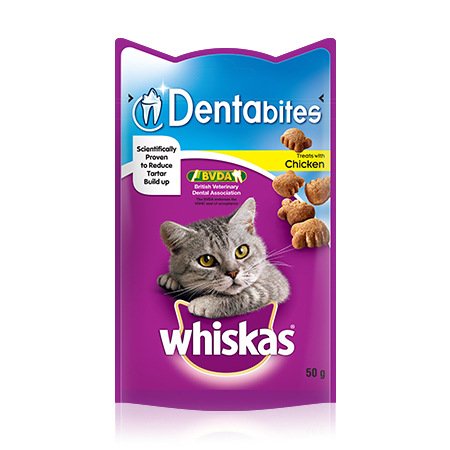


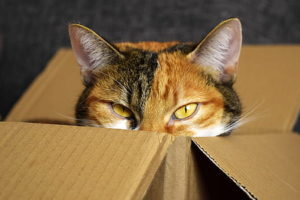

No comment yet, add your voice below!